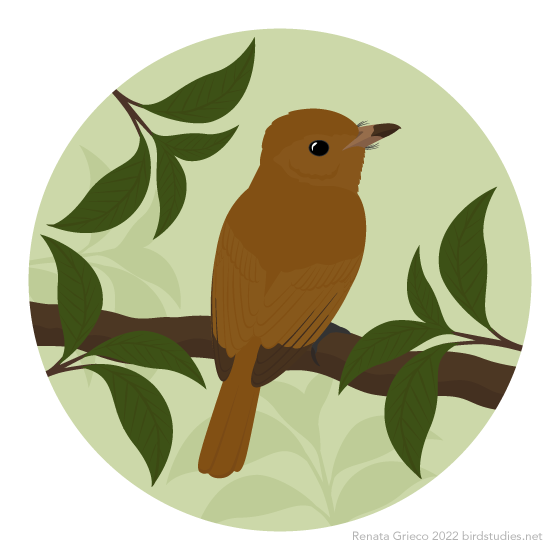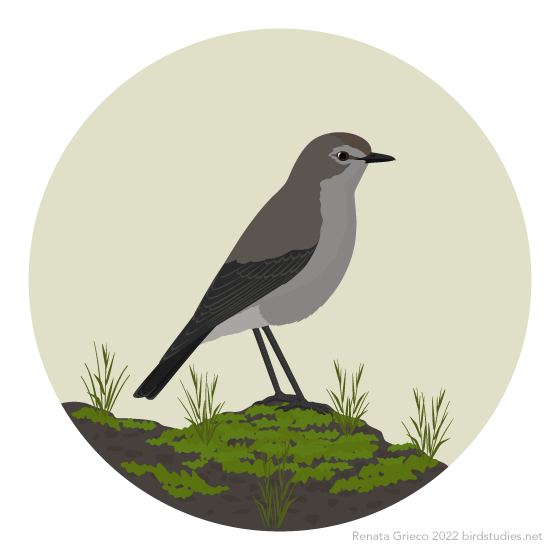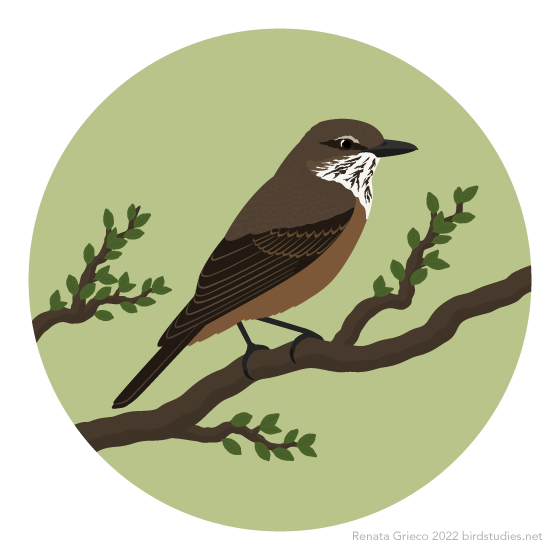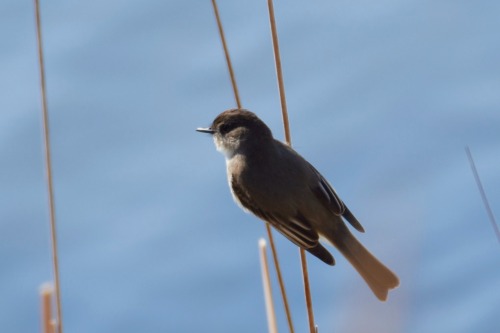#tyrant flycatcher
My first Eastern Phoebe sighting of the year today at Tommy Thompson Park. Also saw my first few tree swallows.
Post link
 ALT
ALTMay 2, 2022 - Mountain Elaenia (Elaenia frantzii)
Found from southern Mexico into Colombia and Venezuela, these tyrant flycatchers live in scrubby habitats and forest edges. They feed on insects, spiders, berries, and seeds, plucking food from plants or the ground in short flights. Females build cup-shaped nests from rootlets, mosses, liverworts, lichens, and other materials and incubate the eggs.
 ALT
ALTApril 28, 2022 - Common Tody-Flycatcher or Black-fronted Tody-flycatcher (Todirostrum cinereum)
Found from southern Mexico into central South America, but not in much of Amazonia, these tyrant flycatchers live in gardens, forest clearings and edges, and other open and semi-open habitats. Frequently foraging in pairs or small family groups, they capture their arthropod prey in quick flights or pick it from plants while hovering. They also eat some fruit. Pairs build long pouch-like nests with side entrances in trees from plant fibers, spiderwebs, and other materials. Females incubate clutches of two to three eggs and both parents feed the chicks.
 ALT
ALTApril 23, 2022 - Rufous Casiornis (Casiornis rufus)
Found in parts of Uruguay, Argentina, Bolivia, Brazil, Paraguay, and Peru, these tyrant flycatchers live in savannas and forests, often along rivers or wetlands. Their diet is made up mostly of insects as well as some fruit. They build open cup-shaped nests in cavities in tree stumps or wooden fence posts where females lay around three eggs. Both parents feed the chicks.
 ALT
ALTApril 20, 2022 - Plain-capped Ground-Tyrant or Paramo Ground Tyrant (Muscisaxicola alpinus)
These tyrant flycatchers are found in scrubland, grassland, and other open areas in the Andes in parts of Colombia and Ecuador. They eat insects, standing upright on the ground or a low perch and capturing their prey in short flights. They build nests from grass and roots in cavities or crevices under rocks, where females lay clutches of four eggs.
 ALT
ALTMay 21, 2022 - Sooty Tyrannulet (Serpophaga nigricans)
These tyrant flycatchers are found in parts of southeastern South America, usually near water. They feed on insects, flitting from branches and rocks to catch them in the air, on the ground, or at the surface of the water. Breeding from October to December, pairs build tightly woven cup nests from roots, grasses, and feathers.
 ALT
ALTMay 10, 2022 - Lesser Shrike-tyrant (Agriornis murinus)
These tyrant flycatchers are found in open plains and dry scrub of southeastern South America. Their diet includes insects, small mammals, lizards, amphibians, and the eggs and chicks of other birds. Breeding in the Patagonian slopes between October and March, they build cup-shaped nests from stems, lining them with grass and feathers.
 ALT
ALTMay 26, 2022 - Streak-throated Bush-Tyrant (Myiotheretes striaticollis)
Found in the Andes from Venezuela to Argentina, these tyrant flycatchers live in open habitats, including shrublands and forest edges. They eat insects and small vertebrates, hunting alone or in pairs in flights from exposed perches. They build their messy cup-shaped nests under bridges or overhangs.

